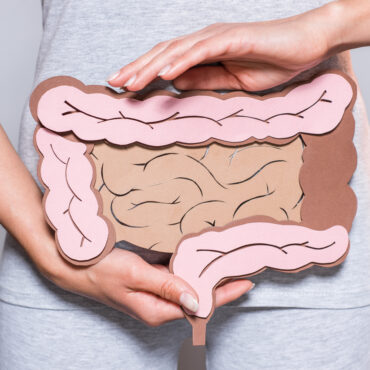-
 play_arrow
play_arrow
BayRadio Listen Live Broadcasting in Spain


Quirónsalud joins the Movember initiative to raise awareness about prostate cancer, testicular cancer and mental health in men
November is Men’s Health Month. This initiative, promoted by Movember, aims to address men’s health issues, such as prostate cancer, testicular cancer, mental health and suicide prevention.
The movement began in Australia in 2003, when a group of friends decided to grow their moustaches in the month of November as a way to raise funds and awareness about prostate cancer and testicular cancer.
What started as a local initiative has grown into a global phenomenon that has raised millions of dollars for charities and inspired men around the world to get involved.
The reality is that men die, on average, 4.5 years earlier than women, from causes that are primarily preventable. For this reason, Quirónsalud has joined this movement, with the aim of focusing on the importance of prevention. Drs. Alejandro Pascual and Alexandr Zhiganov and Dr. Amparo Míguez, have provided fundamental information on prevention and check-ups of men’s health.
Dr. Zhiganov, specialist in general medicine and coordinator of check-ups at Quirónsalud Torrevieja, stresses the importance of medical check-ups at different stages of life.
According to World Health Organisation (WHO) guidelines, the frequency of checkups varies depending on age and individual risk factors.
Dr. Zhiganov explains that, generally speaking, it is recommended to have a check-up every four years before the age of 40, then every two years until the age of 60, and finally, one year after this age.
However, it indicates that the individual situation of each person (tobacco use, alcohol, etc.), as well as a family history of hereditary diseases, can influence the frequency of check-ups.
What does a medical check-up consist of?
The medical check-up is a process that consists of several stages, such as a personal interview with the doctor to learn about the medical history and current lifestyle habits, and a general examination to assess the state of health and detect possible pathologies or risk situations.
When to see a urologist?
For her part, Dr. Amparo Míguez, urologist at Quirónsalud Torrevieja, stresses that prevention is the best medicine “all men should have urological check-ups once a year when they pass the threshold of 45 or 50 years (if they do not have hereditary risk factors), because at this age some pathologies related to the natural aging process begin to develop”.
According to the expert, these check-ups are key to early diagnosis and treatment of serious problems, some of which are asymptomatic until they are already in an advanced stage, such as prostate cancer.
The specialist in urology at Quirónsalud Torrevieja indicates that “you must go to the urologist in the event of any symptoms, pain or discomfort in the genito-urinary area, changes in the organolectic characteristics (smell, colour, appearance ,…) of urine, or suspicion of some genital expansive process that is developing and that could have been discovered/identified in the self-examination.”
The doctor explains that the main urological problems in young people between 18-20 years old can arise from their adolescence and are related to the beginning of sexual life. More broadly, between the ages of 18 and 30, “it is common for the urologist to treat urinary tract infections, kidney stones, sexually transmitted diseases/infections (STDs/STIs) and, in some cases of men, erectile dysfunction (ED) issues.”
In addition, Míguez specifies that “testicular cancer develops at an early age, so young people must be alerted to go to the urologist if any abnormality is discovered in the testicles”. Testicular cancer is the second most common cancer among young men worldwide.
However, the specialist stresses that men go to the urologist for the first time between the ages of 45 and 50 for their general check-up if they do not have any symptoms. “They especially come if certain lower urinary tract (LUTS) symptoms have begun to appear, for example, getting up at night to urinate (nocturia) or that the urine stream has less strength and calibre. But among the most serious are prostate diseases, especially prostate cancer.”
How is prostate cancer diagnosed?
There are two common tests for initial detection and, depending on the result of these tests, a biopsy will be performed.
For the diagnosis, PSA will be performed, a blood test that looks for the presence in the blood of a protein specifically produced by prostate cells. “It is the prostate marker, it is not specific for cancer, but it allows its levels to be monitored throughout the adult life of the male. If it rises, it’s an indicator that further investigation is needed.” Even so, according to the specialist, the digital rectal exam is still an important tool in the physical examination to complete the diagnosis.
Urological check-ups over 60 years old
At this stage of life, the most common problems are usually related to lower urinary tract symptoms due to prostatic obstruction and erectile dysfunction.
The urologist also points out Benign Prostatic Hyperplasia (BPH), “a non-cancerous enlargement of the prostate, which becomes more prevalent after the age of 60.” Prostate cancer, on the other hand, “is a cancer that affects men from the age of 50 and is uncommon in the 40s, being almost non-existent before,” the doctor points out.
Cardiology check-ups
A cardiovascular check-up is a medical check-up that consists of determining the state of the heart and circulatory system in order to identify the main causes of coronary risk.
Current recommendations state that men over the age of 45 should have their cardiovascular risk assessed.
Dr. Alejandro Pascual, head of Cardiology at Quirónsalud Alicante, explains that in this review, an assessment should be carried out aimed at looking for cardiological symptoms or cardiovascular disease, as well as a clinical and analytical assessment in search of the presence of cardiovascular risk factors.
All this to prevent cardiovascular diseases such as high blood pressure, dyslipidaemia or diabetes mellitus.
How often should I have a cardiovascular check-up?
According to the expert, we should assess cardiovascular risk every five years, “or sooner if we are at a risk level close to needing treatment for heart disease.”
Prevention, essential to take care of your health
Prevention is fundamental to health care. “Not only does it prevent the emergence and spread of diseases, but it also reduces the need for more expensive treatments and other health care,” says Dr. Zhiganov.
Written by: BayRadio News
Similar posts
Recent Posts
- Reclaim your shape, reclaim your confidence: The transformational power of a tummy tuck
- Magnetic Endoscopic Capsule: A Revolution in Digestive Diagnosis
- Nine out of ten cases of blindness caused by glaucoma could be prevented through annual check-ups
- Benefits of Female Intimate Surgery: Sexual Health and Well-Being
- Quirónsalud Torrevieja Hospital Kicks Off Its 25th Anniversary with the Inauguration of the Bell of Dreams

Ctra. Cabo La Nao, CC La Nao, Local 6 03730 Javea, Alicante, Spain
Advertise with us
Do you have a business in Spain? Do you provide a service to the expat community in Spain? Would you like your message to reach over 500.000 people on a weekly basis?
BayRadio is a community orientated radio station offering fantastic content to our many listeners and followers across our various platforms. Contact us now and find out what Bay can do for you!
Our business is helping your business grow.
BAY RADIO S.L. © 2024. ALL RIGHTS RESERVED. WEB DESIGN BY MEDIANIC







